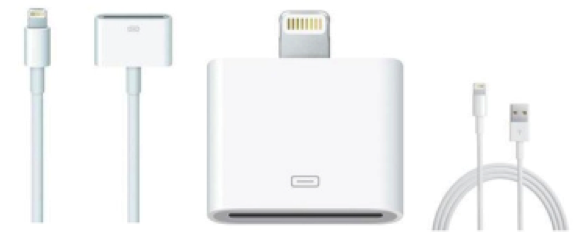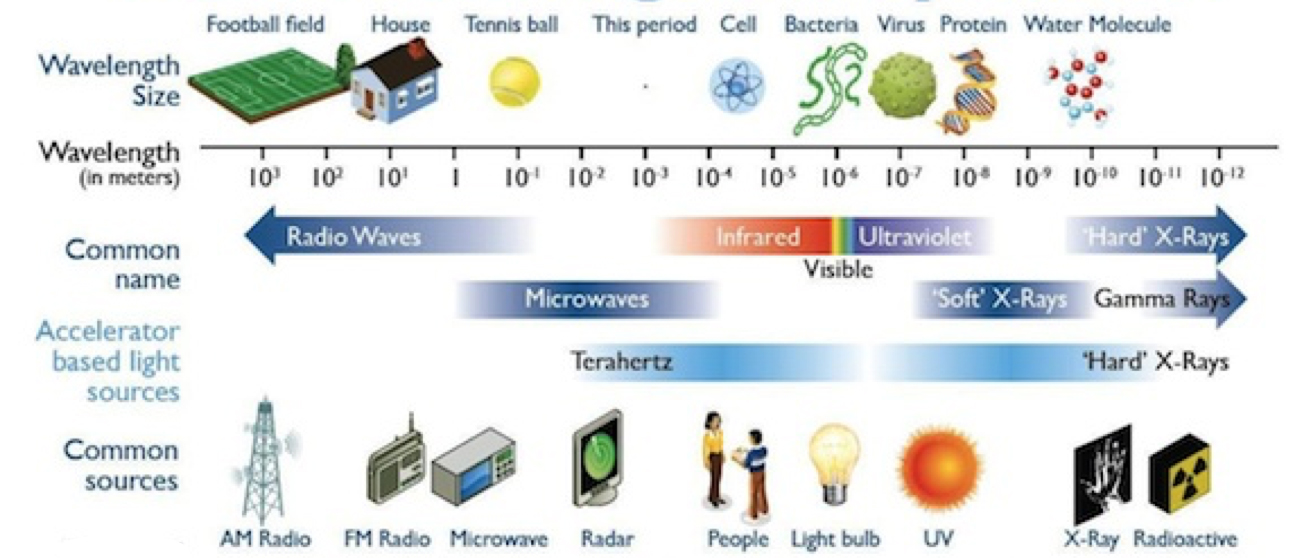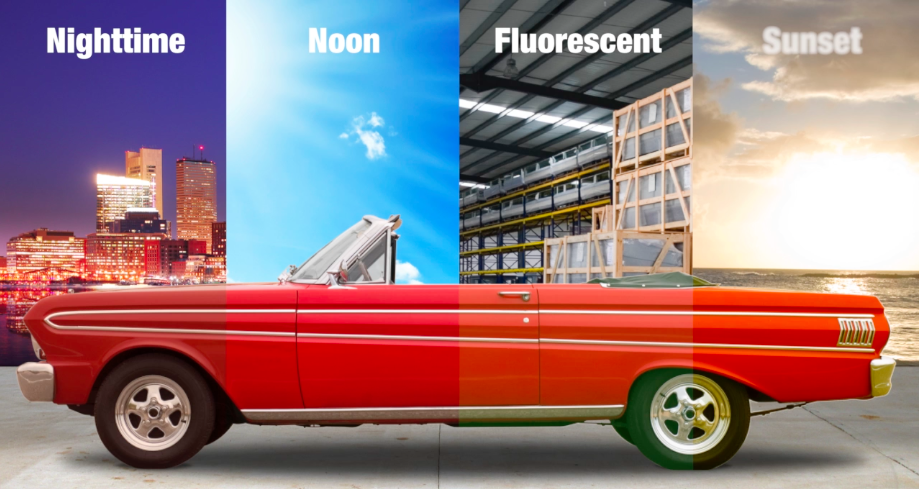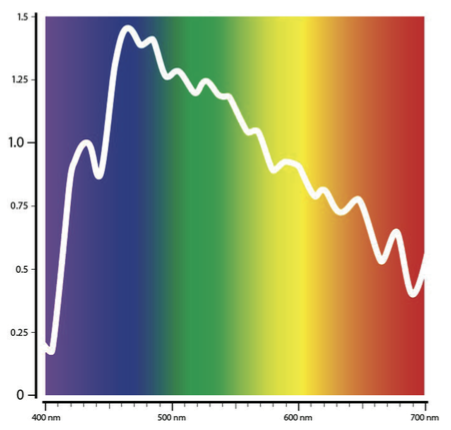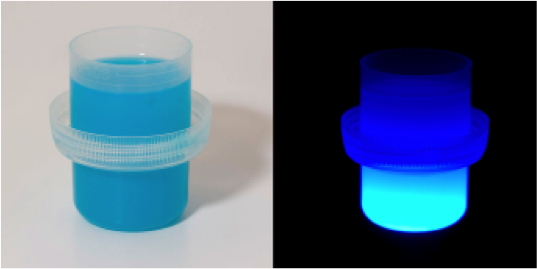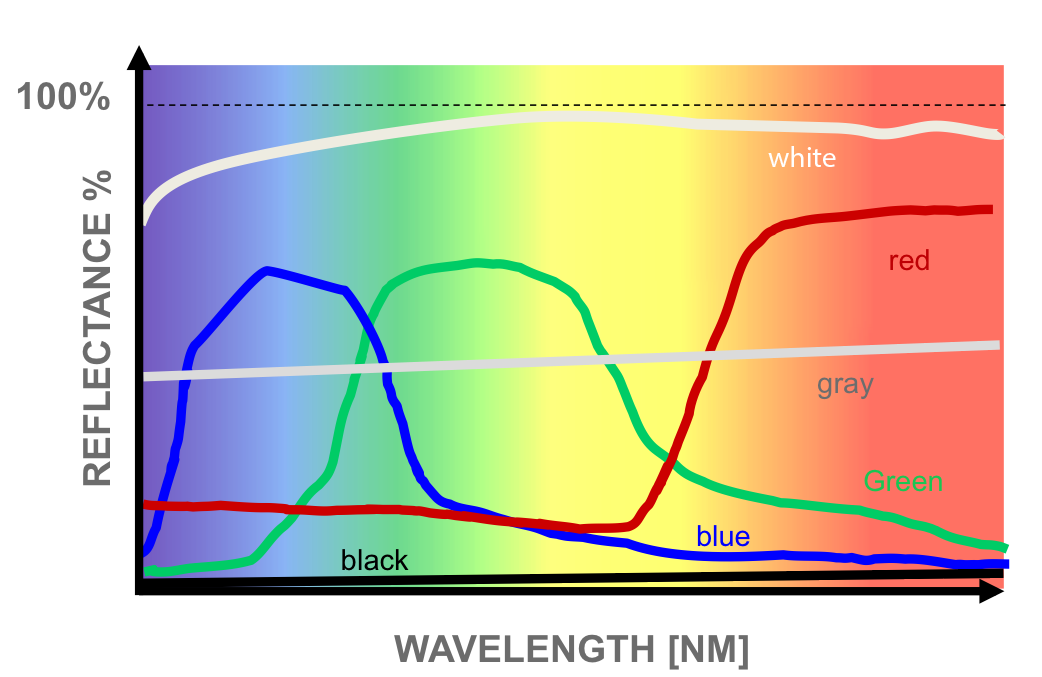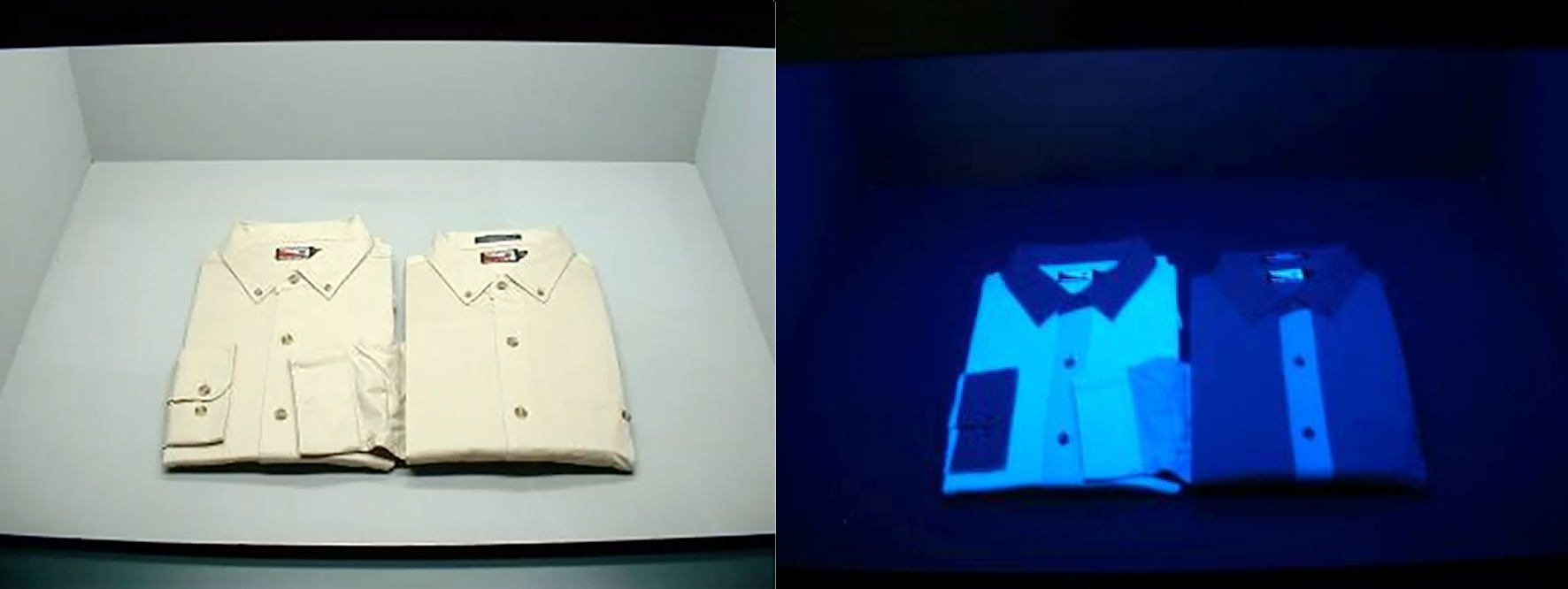Did you know that many of the products you use every day contain optical brighteners?
Optical brightening agents are chemicals that manufacturers add to products like paper, plastics, and textiles to make them appear whiter and brighter, and to lessen the natural yellowing process that happens over time. They also add these chemicals to cleaning agents to enhance the appearance of materials – primarily textiles – after cleaning.
Often unacknowledged by the typical consumer, OBAs trick our eyes into seeing a brighter white. To understand how they work, read on. We’ll dig into light-object relationships, the primary reason behind this brighter than white phenomenon.

When viewed under normal lighting conditions, these plastic parts appear bright white, but when viewed under UV light, you can see the glowing effect of the optical brighteners that were added.
When you say you’re traveling at the speed of light….
You’re traveling at 299,792,458 meters (approximately 3.00×108 m/s) per second. As oscillating energy, light has a spectrum of frequencies, too. Like TV or radio signals, light oscillates, and can have many different frequencies. It is the frequency of light that creates a sensation of color.
This is the electromagnetic spectrum. Infrared energy, microwaves, and radio waves all work at lower frequencies and fall to the left of the visible spectrum. To the right, at higher frequencies, are ultraviolet energy, x-rays, and gamma rays.
The visible spectrum, shown below, is the light that we can see with the naked eye. Since it’s the only part of the spectrum we can visualize, many of us consider it all-encompassing, but it’s really just a tiny part of the electromagnetic spectrum.
And you thought your pillowcase was blue…
Wrong! Objects themselves don’t have color… they have dyes, colorants, or pigments that absorb some wavelengths of light and reflect others. The color you perceive is the color of the light that is reflected off of the object.
Take this car, for instance. It’s bright red in the sunlight, but its color seemingly changes to a deep burgundy in the nighttime.
See how the color of the car changes depending on the type of light that is shining on it? The “cleanest” red is at noon.
Close your eyes, and picture a clear, blue day. Although you’re likely picturing a picnic in a park or at the beach, this reflectance curve, below, provides another way to describe what a clear, blue day looks like. Displayed through frequencies, we can see that there is an abundance of energy across the entire visible spectrum, and a clear bias towards the blue.
A clean as white as snow
It’s the goal of cleaning products everywhere. Manufacturers achieve this bright – almost blue – white by adding optical brighteners that are transferred to fabrics during washing.
So how does this difference in white look as a reflectance curve?
As we discussed, colors have different wavelengths. This graph shows the reflectance curves of black, blue, green, gray, red, and white.
A few things stand out.
The black reflectance curve is flat near the bottom with a low reflectance percentage. While the white curve is also flat, it sits at the very top with a high reflectance. Why is this?
Think of a dark room. If there’s no light shining, everything appears to be black. If there is a lot of light, the objects are bright, white, and sometimes even hard to see because there is so much reflectance.
Gray is hanging out in the middle with pretty equal amounts of each color, neither bright nor dark.
Blue, green, and red are peaked in their respective colors, perfect demonstrations of how reflectance curves align with the visual spectrum. High red peak = high concentration of red light.
Watch what happens to the white curve when we add optical brightening agents….
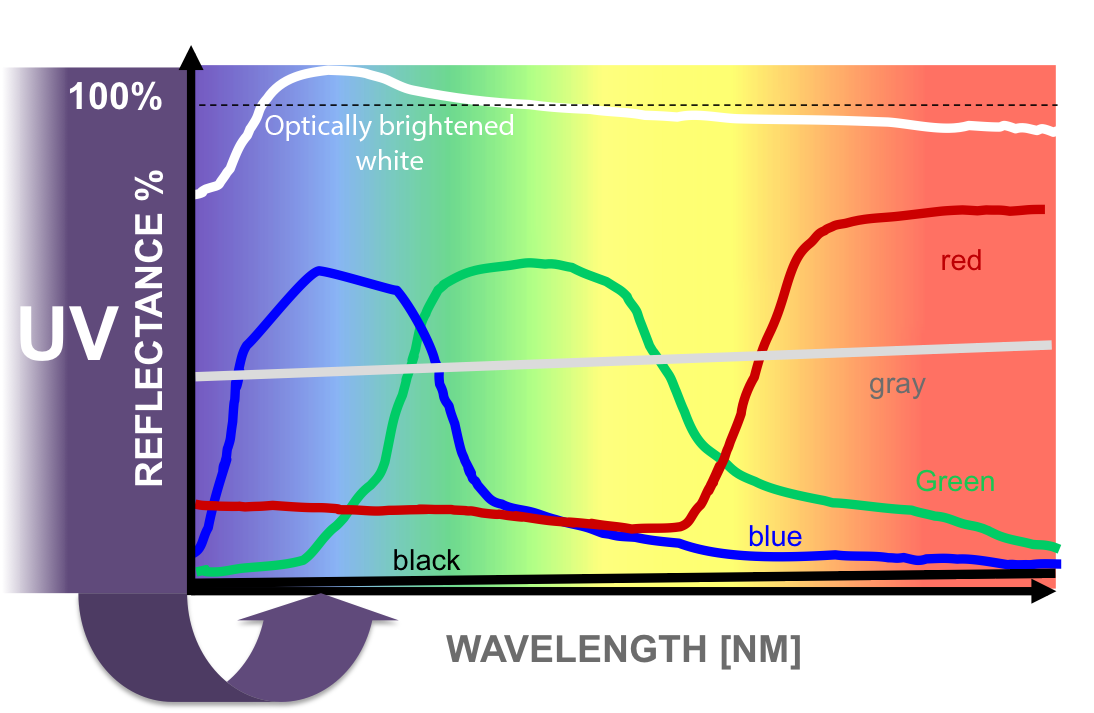
See how the peak rises in the blue area?
OBAs absorb light from the ultraviolet region of the electromagnetic spectrum that we can’t see, and re-emit that light in the blue region where we can see it. Our eyes will perceive this white to be brighter than the white that doesn’t contain optical brighteners.
Taking the good with the bad
Although OBAs help manufacturers sell more products, they make it very difficult to control color because the optical brightening content can only be seen under light sources that contain UV. Before assembling products with pieces from different suppliers, manufacturers need to evaluate the amount of optical brighteners in each to ensure consistency after final consistency and under all of the lighting conditions the product will be exposed to out in the world.
Take these shirts for example…
A manufacturer sewed them using fabric from different suppliers. Although they appear to be the same color white in daylight, as soon as the ultraviolet light is flipped on you can see they are quite different. This is a phenomenon called “metamerism” – when two things appear to match under one light source, but no longer match when you change the lighting.
Understanding OBAs and how they affect substrates gives you some insight into why manufacturers need to control color so carefully. You can learn how to overcome issues caused by optical brighteners in our recent blog post, or check out our whitepaper for more information.
